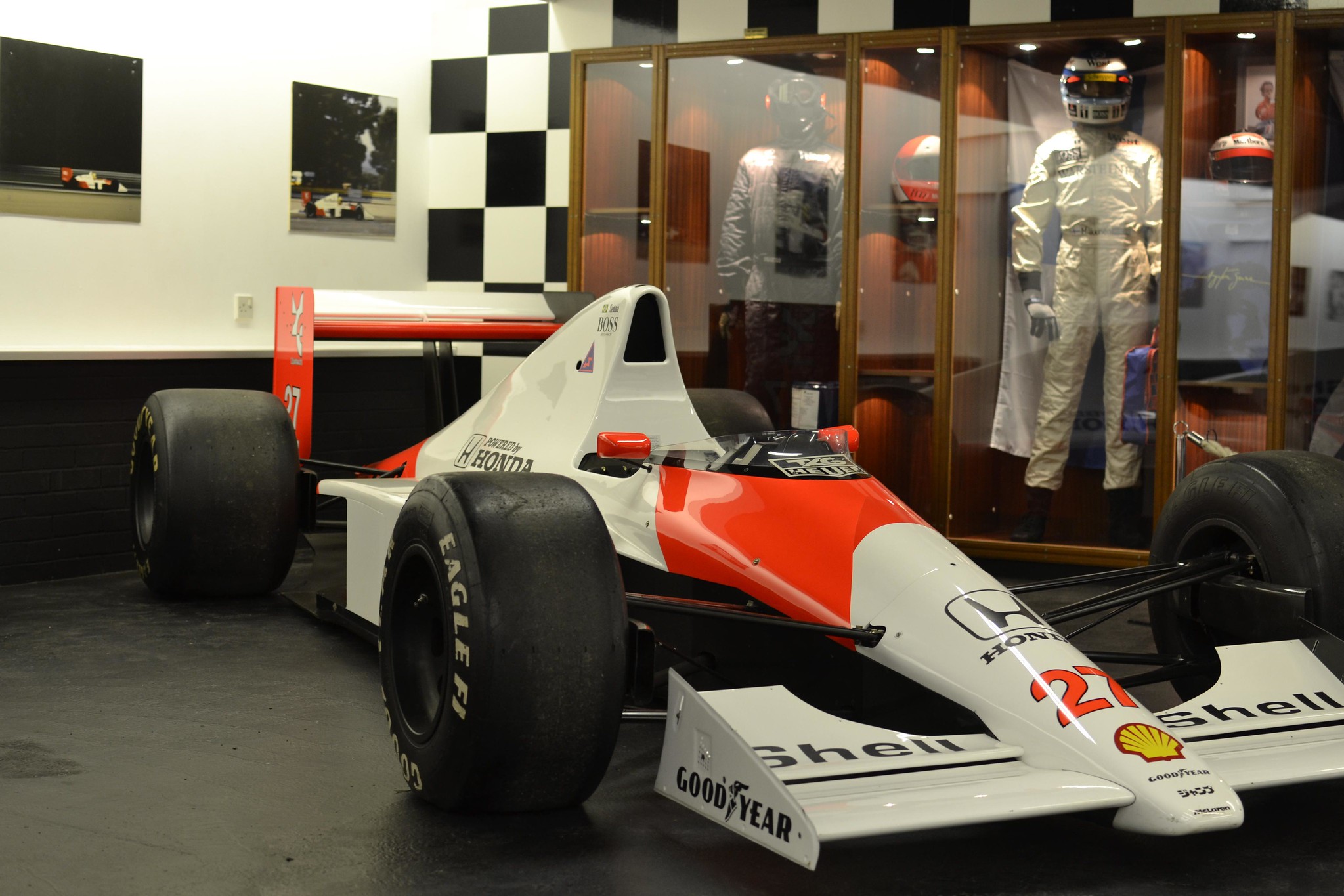McLaren MP4/5
Although not as iconic as its predecessor, the McLaren MP4/4, the 1989 MP4/5 was also a very successful formula one race car winning the Constructor’s Championship for two more consecutive years. Along with the MP4/6, it would be four consecutive years of supremacy for the McLaren-Honda squad —with one driver’s championship for Alain Prost, and three for Ayrton Senna.
The MP4/5 was the first of a new era in Formula 1 as the 3.5-litre normally aspirated engines came into force, marking the end of the turbo-era. The new engine, a 72 degree Honda RA109E V10 designed by Osamu Goto, was delivering 685 bhp at 13,000 rpm, making it the most powerful of the grid. This engine, in combination with an all-new monocoque chassis mounting new double wishbone suspension with pullrods up front and pushrods at the rear designed under Neil Oatley’s guidance, made of McLaren once again the team to beat.
McLaren dominated the 1989 Formula One season. Senna won 6 races, while team-mate Prost made 4 victories in the car designed by Oatley. The season comprised 16 races, of which only the best 11 results counted towards the drivers’ championship total.
Despite Senna having more victories, unreliability and collisions swung the title in Prost’s favour. But it was not without controversy. It was in the Japanese Grand Prix at the end of lap 46, when Prost turned into Senna’s path resulting in a collision and the cars sliding interlocked down the escape road. While the Frenchman decided to drop the race, Senna bump-started the car with the assistance of the marshals, drove through the chicane and rejoined the race —Senna needed to win to remain in contention for the title. It was of no avail. He was disqualified following a stewards meeting after the race.
Prost won the driver’s championship but had the firm belief that Honda and Ron Dennis viewed Senna as the future of the team. Osamu Goto claimed that Senna’s foot-tapping style with the accelerator helped keep the RA109E’s revs up in the engine’s mid-range where most of the power was, while Prost’s smoother style dropped the engines into low revs where they had a pick-up problem [3]. Prost announced, before the Italian Grand Prix, he was joining Ferrari.
With World Champion Alain Prost departing for Ferrari and Gordon Murray turning his attention to the McLaren F1 road car project, Neil Oatley’s team opted to refine the MP4/5 instead of creating an entirely new car. While the car’s monocoque was broadly similar but for the new material used on its construction, the front suspension geometry was modified and the transverse gearbox substantially revised. Aerodynamically, the car used larger side pods and revamped radiator ducting to assist cooling of the RA100E power plant.
Honda produced a new derivative of its V10, the RA10OE engine, with 710 bhp thanks to increased rev limits and new, lower density fuel introduced in the second half of the season and used in qualifying. During race, the revised V10 engine was pushing power from 685 bhp to 690 bhp. The RA109E also gave way to a butterfly throttle system used in the RA100E. Although sliding throttles offered less intake resistance at full throttle, the RA109E suffered from ingestion vortices in the lower power-
The gap between McLaren-Honda and Ferrari was becoming narrower. Despite the challenge posed by Prost and his Ferrari during the final quarter of the season, Senna won the championship with six wins, two second places and three thirds, although controversy arose again at Suzuka that season. Senna took pole ahead of Prost, but starting from the clean side of the track, the Frenchman pulled ahead of Senna. The Brazilian immediately tried to re-pass Prost at the first corner. When Prost turned in, both cars collided spinning out of the race, making Senna in his #27 McLaren-Honda world champion.

The 1991 season gave way to the Honda V12 powered MP4/6, continuing the successful McLaren-Honda-Senna partnership towards another two championships.
References
McGrath, P. (2011). Car Spotlight>> Senna’s McLaren MP4/5B. [online] Speedhunters.
Available at: www.mclaren.com [Accessed 24 Nov. 2014].
Wikipedia (2014). Alain Prost. [online]
Available at: en.wikipedia.org [Accessed 24 Nov. 2014].


